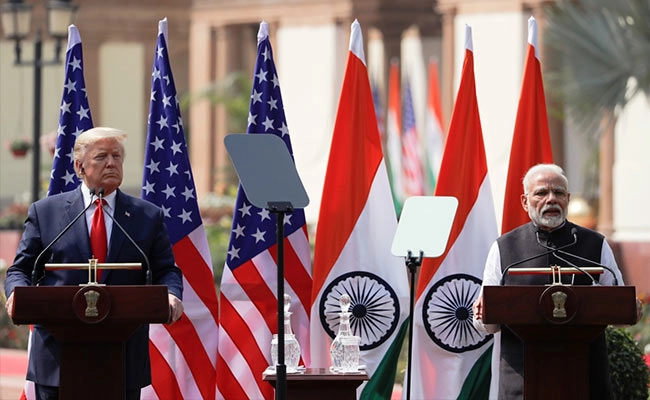In a significant shift in trade relations, former President Donald Trump has announced a dramatic increase in tariffs on goods imported from India, raising the tariff rate to 50%. This decision has taken many by surprise, as it marks a substantial escalation in the ongoing trade tensions between the United States and India. The announcement comes amid a backdrop of fluctuating diplomatic relationships, with both nations grappling with various geopolitical challenges and economic pressures. The rationale behind this move, as articulated by Trump’s administration, revolves around addressing trade imbalances and protecting American industries.
In response to this unexpected tariff hike, the Indian government has expressed its concerns and is currently evaluating the potential impacts on its economy. Officials from the Centre have indicated that they are committed to protecting Indian interests and may consider retaliatory measures if necessary. Trade experts are closely monitoring the situation, as the increased tariffs could lead to higher prices for consumers in both countries and potentially disrupt existing trade agreements. The Indian response also highlights the importance of diplomacy in navigating complex trade relationships, emphasizing the need for dialogue to resolve differences.
The implications of Trump’s decision extend beyond immediate economic concerns. The elevated tariffs could strain bilateral relations, affecting various sectors from agriculture to technology, which are crucial for both economies. Analysts suggest that this move could lead to a tit-for-tat scenario, prompting India to reconsider its trade policies and potentially retaliate with tariffs of its own on U.S. goods. As both nations prepare to navigate this new landscape, the focus will likely shift to negotiations aimed at finding a resolution that could stabilize trade relations and promote mutual economic growth.
In summary, Trump’s doubling of tariffs on Indian imports to 50% marks a critical juncture in U.S.-India relations, prompting robust responses from the Indian government. As both countries weigh their options, the broader implications for international trade and economic cooperation will be closely observed by stakeholders around the world. This development underscores the intricate balance between protecting national interests and fostering global trade partnerships in an increasingly interconnected economy.




